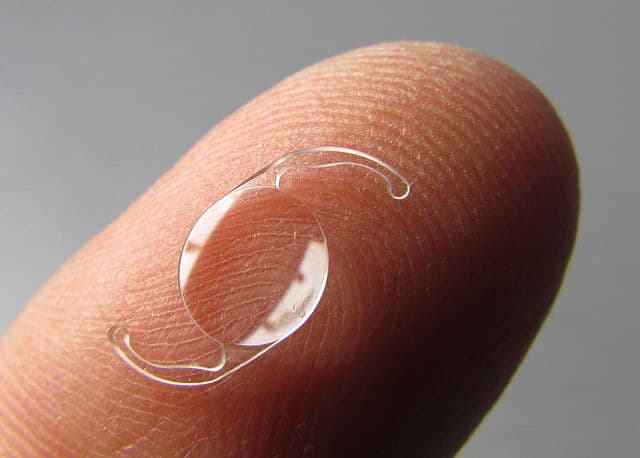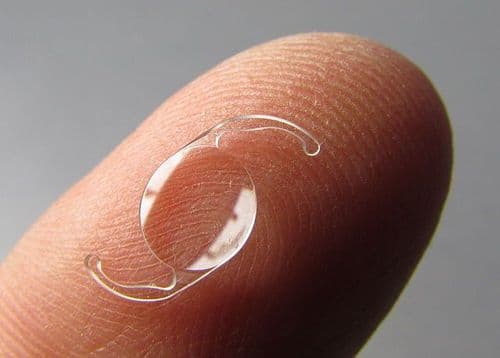


Over the past two decades, cataract surgery has developed into one of the most commonly performed and successful surgical procedures in the world, giving millions the ability to restore their vision. The intraocular lens (IOL) is a fundamental part of cataract surgery because it replaces the eye’s natural lens when it becomes cloudy due to cataracts. Many patients are unaware of the options unique to IOLs or the differences in how they can affect their vision, postoperatively. This blog will highlight the available IOL options and their respective features, benefits, and suitable patient populations to help you make informed decisions.
Intraocular lenses can be broken down into categories based on a variety of factors, such as design, material, or specialization. It is critical for patients undergoing cataract surgery to understand the differences, which will influence their visual capacity. The following are the categories of intraocular lenses that are available to patients during cataract surgery:
1. Monofocal Intraocular Lenses
2. Multifocal Intraocular Lenses
3. Toric Intraocular Lenses
4. Accommodating Intraocular Lenses
5. Extended Depth of Focus Lenses
Monofocal lenses are the most typical type of intraocular lens used in cataract surgery. Monofocal lenses have one focal point and provide clear vision at one distance (near or far).
Multifocal IOLs are unique lenses designed to help you see well at all distances—near, intermediate, and far. They have multiple zones or rings which help to focus light at a variety of distances, which is appealing to patients wishing to reduce their dependence on glasses.
Toric IOLs are put in place for a specific purpose to correct for astigmatism; they have different powers in different meridians of the lens to counteract the irregular corneal shape that causes astigmatism.
Accommodating IOLs simulate the natural lens's ability to change shape and focus on objects that are near or far. In this case, they move position within the eye as the eye muscles contract and relax to provide very similar overall vision to a natural lens.
These lenses have the ability to enhance distance vision, resulting in patients having a continuously clear vision at different distances. While multifocal lenses have a few separate focus points designated for each distance, extended depth of focus lenses create a smooth gradient of vision.
Best suited for: Patients that want better vision, while not being fully reliant on their glasses and want to mitigate the effects of presbyopia (the age-associated distance vision loss).
Drawback: Some patients may still need glasses at specific activities (e.g. reading fine print).
When making the decision to have cataract surgery, it is important to review options related to the different types of IOLs with your eye surgeon, who can provide recommendations for the best intraocular lens based on your needs, lifestyle, and vision goals. Below is an overview of the types of cataract lenses:
For standard monofocal lenses, as indicated previously, patients will only be able to optically adjusted vision at one distance, which tends to be the most cost-effective solution and insurance plans typically pay for the lens. However, be prepared to accept the chance of needing glasses for reading or other near tasks.
Premium lenses encompass several categories, including multifocal, toric, and accommodating. Although these lenses are generally more expensive, they provide opportunities for enhancements in terms of vision quality and reduction in dependence on glasses. Most patients find the investment in premium lenses well worth it as it improves their overall quality of life.
Several manufacturers will also create customized IOLs based on the need and desires of the patient. These lenses can be specifically designed according to the measurements of the patient's eye, while working toward a highly personalized approach to restoring vision.
When selecting the most suitable intraocular lens, a number of important factors must be carefully considered:
It is very important to communicate freely with your ophthalmologist regarding your lifestyle visual needs. Your ophthalmologist will be able to provide you with recommendations for the best intraocular lens used for your cataract surgery and you can then make an informed choice.
The operation for cataract surgery consists of taking out the cloudy lens that is natural and replacing it with the intraocular lens you agreed upon. The total surgery time is approximately 15 to 30 minutes and is performed under local anesthesia. The recovery time is relatively short, and many patients don’t have difficulties with vision for several days.
During the preoperative exam, your ophthalmologist will perform a thorough eye examination which consists of:
This thorough evaluation ensures that you receive the best intraocular lens tailored to your individual needs.
Selecting from the various IOL lenses can lead to better vision and improved quality of life after cataract surgery. You may be considering monofocal, multifocal, or toric types of intraocular lenses. Each of these types has different perks based on your lifestyle and visual needs.
Choosing the appropriate intraocular lens (IOL) after cataract surgery is an important step to help ensure that you have clear, enduring vision. At ClearView Eyes, we assist you with information of your choices based upon your individual and medical needs.
Think about your lifestyle—reading, driving, or working with screens. Certain IOLs can provide better near, intermediate, or distance vision that best fits your lifestyle.
If you want to be free from glasses, premium implants like multifocal lenses or toric lenses are more suitable.
Other eye health issues exist, for example astigmatism or retinal problems, that will also help determine what period lenses are best for you.
For anyone contemplating surgery for cataracts, it is important to know about the different types of intraocular lenses available. Each type of lens comes with its own advantages and disadvantages, which is why it is important to talk to a qualified ophthalmologist about what lens is right for you. Together, you can consider your lifestyle and visual requirements and think about the possibilities of what your vision will be like post-cataract surgery. Then, you can choose the intraocular lens that is best suited for cataract surgery to improve your vision and improve your quality of life overall. With technology advancing and more lens options available to surgery patients, you can look toward a clearer and brighter future!
The most frequently used intraocular lens is the monofocal IOL which provides clear vision at one distance, typically set for distance vision. Of all of the type of IOL lenses, monofocal IOLs are the standard lens for cataract and other types of surgery, thanks to their price, reliability and availability.
There are many types of intraocular lenses, including monofocal, multifocal, toric, and accommodating IOLs. Different cataract lens options mention how they correct vision after the cataract lens, with each type designed for particular vision and lifestyle needs after cataract surgery.
Multifocal IOLs can minimize the need for eyewear; but they can lead to glare, halos, or a reduced quality of contrast in dim lighting. These are among the trade-offs a patient needs to weigh when selecting from the various types of IOL lenses for their personalized vision goals.
For patients who are particularly anxious about night driving, monofocal IOLs set for distance vision are generally the best type of lens for cataract surgery. They usually have better contrast sensitivity and less night glare than the multifocal lenses.
Cataract lenses are intended to be permanent lenses; however, in rare cases, they may be replaced if complications occur. However, the procedure of replacing an IOL is complex and infrequently performed. Consider carefully your cataract lens options prior to surgery.

Call Us: (858) 452-3937
8:30AM - 7:00 PM - Monday through Saturday (Saturday until 11:30AM)